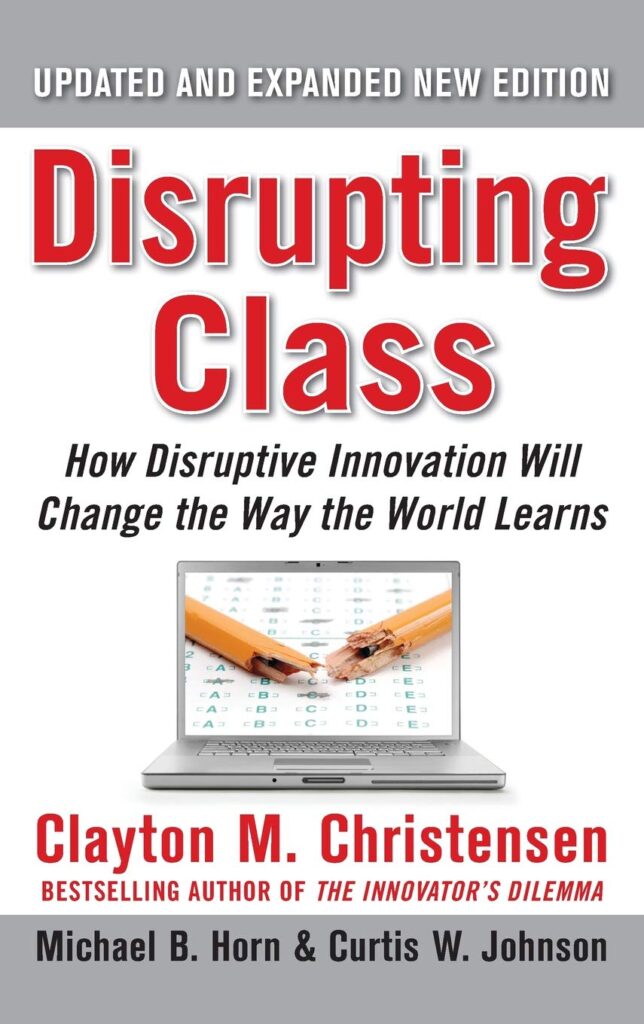On January 23, the education world lost a giant with the passing of Harvard Professor Clayton Christensen. He was a man of many talents: a Rhodes Scholar at Queen’s College, Oxford, who represented the university at basketball. Unusual for an academic and prolific author, Christensen was also a successful businessman, having been CEO of a high-tech ceramics company, founder of a consulting company and a venture capital fund. He was also a dedicated Mormon and his religion was very important to him. As a young man he was a missionary in Korea when it was a still desperately poor country, and this gave him important perspectives on development issues.
By way of tribute, Whizz’s co-founder Ray Douse shares some of the main lessons from Disrupting Class: How Disruptive Innovation Will Change the Way the World Learns, Christensen’s book (with others) on the critical role of technology in disrupting education. More than a decade old, Christensen and his colleagues’ ideas have proven prescient, and their arguments should resound with educators looking for innovative solutions to the sector’s most stubborn problems.
Disrupting Class seeks to answer why America’s schools seem to be failing and why they attract such criticism. It proposes that educational technology, once it becomes student-centric, will eventually be the disruptive innovation to change schools for the better.
The thesis is that we should not blame teachers, unions, etc. for the perceived failures of American schools. Schools have, in fact, made improvements over the years, just not enough to satisfy everybody’s changing expectations and needs after “society…moved the goal posts on schools”.
Students need at least one, ideally both, extrinsic and intrinsic motivation to learn. Some students develop for themselves an extrinsic motivation from pressure to achieve qualifications but economic prosperity of their parents has eroded intrinsic motivation in the US and many other Western countries. Human beings typically are strong in only one or two of Howard Gardner’s eight or more types of intelligence. If an individual’s strength is neither Verbal/Linguistic (e.g. J.K. Rowling) nor Logical/Mathematical (e.g. Einstein) but one or more of the others, i.e. Visual/Spatial (e.g. Norman Foster), Bodily/Kinaesthetic (e.g. Lionel Messi), Musical (e.g. Elton John), Intrapersonal (e.g. Freud), Interpersonal (e.g. Oprah Winfrey) and Naturalist (e.g. David Attenborough), they are likely, without a lot of extrinsic motivation, to struggle in school.

This is because there is a typically one-size-fits-all approach to education on the part of schools, their teachers and the textbooks and other materials used in the classroom, and only the verbal/ linguistic and logical/mathematical approaches are addressed adequately (though even this claim could be contested).
The model of standardisation in schools that is failing many students— “categorizing students by age into grades and then teaching batches of them with batches of monolithic material”— was influenced by the early industrial factory system. By introducing grades and having a teacher focus on only one set of students of the same academic proficiency, “teachers could teach ‘the same subjects, in the same way, and at the same pace’ to all children in the classroom”. Due to the homogeneous model, educators struggle with engaging all of their learners and are discovering the importance of technology’s role in tapping into students’ interests. It is no doubt, however, that many students do not have their interests met and developed in their current academic spheres even with today’s EdTech since it is also usually in the same style of teaching as the teachers use.
The one major ingredient missing from all current and previous educational philosophies is individualised instruction, where every student learns at his or her instructional level, at his or her own pace, in a manner suited to his or her type of intelligence and with material in a style in which he or she is interested and to which he or she can relate. In practice, this is very difficult for schools (as they are currently structured) and for teachers (as they are currently trained) to deliver. This notion of individualised and differentiated instruction could, however, be delivered through online, student-centric learning experiences.

Christensen and his fellow authors subsequently compare education’s infrastructure to a business model, explaining why schools are failing the nation, especially with meeting the demands of No Child Left Behind and standardization. They cite examples of how businesses failed to adopt new approaches and focused on building their current clientele, creating products to support existing markets. This, it is claimed, made economic sense at the time, even if the current market called for something different or more innovative. Christensen discusses that “cramming what should be a disruptive innovation [e.g. EdTech] into an existing marketplace is fraught with expense and disappointment because new disruptive technologies never perform as well as does the established approach in its own market”. But, unfortunately, when a new, more in demand, and cheaper product came along, those businesses failed to compete and thus collapsed. Christensen emphasises that this is the current situation in education where the current supply is not meeting the demand or need. This is presented through his “jobs-to-be-done model”. Students, Christensen suggests, need to have a reason to ‘hire’ school. What is demanded of education is the need for more personalised, relevant instruction that cannot be met the way that schools are traditionally designed and organized.
“The way schools have employed computers has been perfectly predictable, perfectly logical – and, if transforming learning is the goal, perfectly wrong.” – Disrupting Class, page 73
When we look at disruptive technologies in the for-profit sector, innovation disrupts and eventually eliminates established businesses, primarily because the innovation in question begins by addressing non-consumers – those individuals who had not previously been customers for the established market leaders – before improving sufficiently to satisfy the broader market. In contrast, the public education system enjoys a near monopoly, which provides no place for disruptive technologies to attract new consumers.
When we look at the ways computers have been used hitherto in schools, they have primarily served as a replacement for older technologies (exercise books and fountain pens). In every other area of our lives, new technologies have transformed the way we create, communicate, and collaborate – but not in education. Our schools have adapted technology to existing models, rather than disrupting how they deliver and measure teaching and learning.

I offer two takeaways from Christensen’s work, which retain as much relevance in 2020 as when they were first penned in 2008.
Takeaway 1: Education Markets Ready for Disruption
“Like all disruptions, it first appears as a blip on the radar, and then, seemingly out of nowhere, the mainstream rapidly adopts it.” – Disrupting Class, page 91
Back then Christensen and his co-authors identified four areas where computer-based technologies were already taking root to meet the needs of underserved populations:
- Advanced Placement classes offering college-level courses to high school students
- Urban secondary schools, primarily in low-income areas, where resources are constrained
- Homebound and home-schooled students, where traditional classroom education is either impossible or not wanted by the parents
- Credit recovery for students who need to make up credits
In each of these populations, new education providers were already meeting the needs that traditional public schools could not. Christensen expected advances in technology to continue to improve the ability of the software and to reduce the cost of online education. He felt the best news was that as these technologies become more widely available and affordable, public schools will adopt them en masse.
Takeaway 2: Disrupting Toward Student-centric Learning
“The entire system for creating education materials, making the decisions about which materials to adopt, and delivering the content to students must and will change.” – Disrupting Class, page 125
In the two-stage process by which existing systems are disrupted, the value network that supports our public education system will give way to a new network focussed on facilitating individualised learning. At present, the production, distribution, and marketing of textbooks determines most of what is taught in class and how it is taught. In the future, however, facilitated networks of user-generated, collaborative content will serve to disrupt the current network, finally creating a healthy student-centric learning economy.
